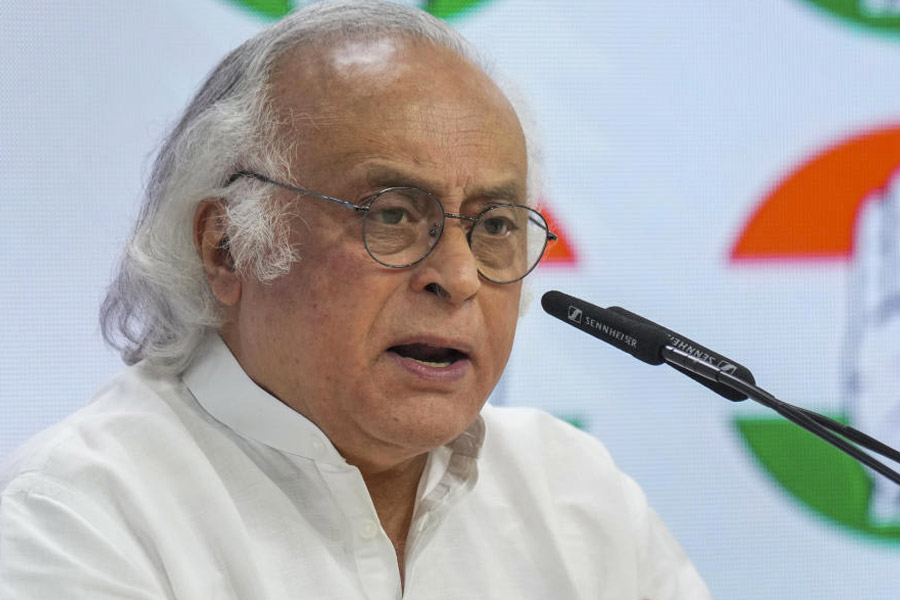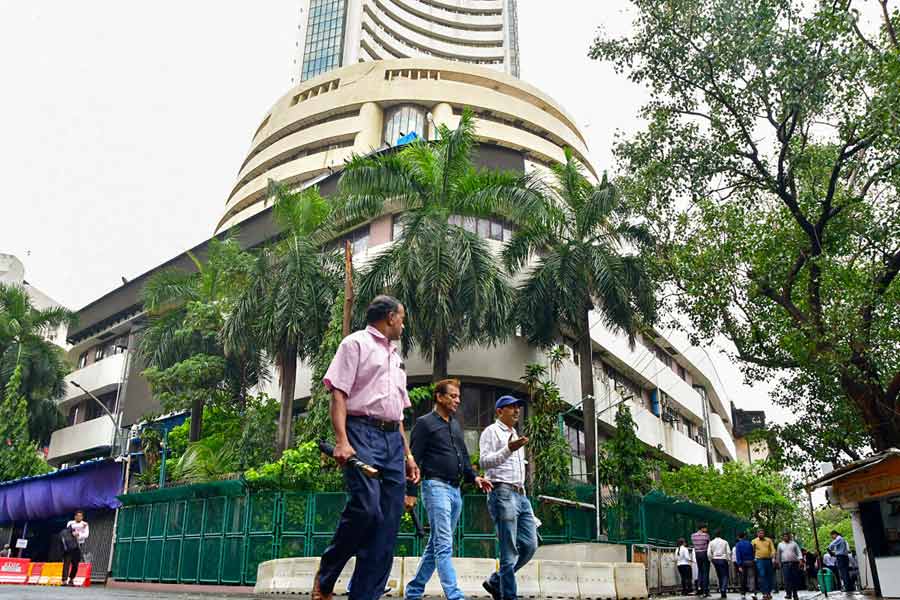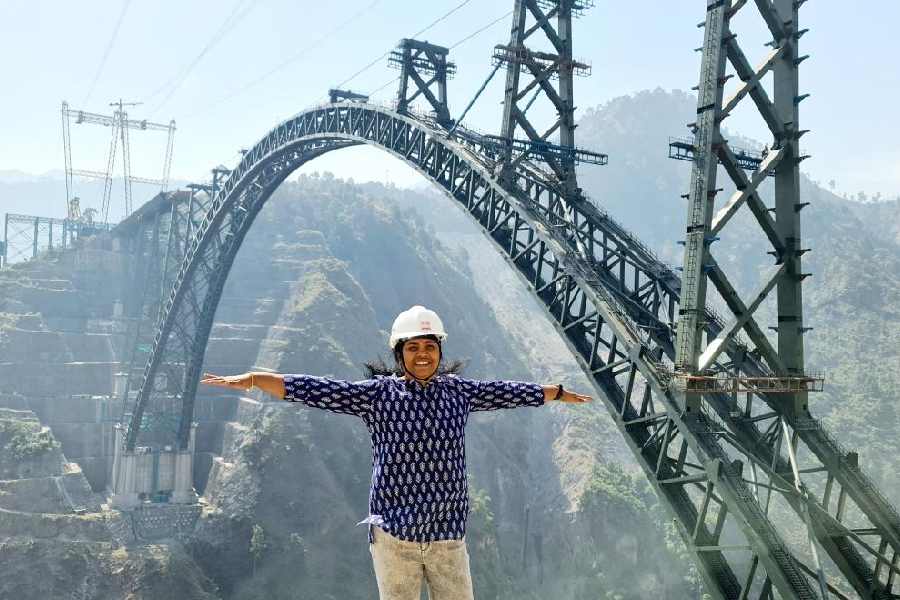 |
| Howrah Bridge and (on either side) the kind of pillars that go deep underground to hold it up. The bases of these pillars are being corroded by water and neglect. Pictures by Amit Datta |
Howrah bridge is not falling down, but the four legs that hold it up are corroding fast.
The cantilever bridge stands on four 80ft limbs buried on either side of the Hooghly and seeping water has already bitten off some of its steel in 69 years.
“There has been 5 to 6 per cent corrosion of the anchors up to 10 metres (or 33ft) from the base underground. If we don’t act immediately, the safety of the bridge will be seriously compromised,” D.D.N. Singh, the scientist who had led a team that went underground to study the damage, told Metro.
He is the chief scientist and head of corrosion and surface engineering at the Council of Scientific and Industrial Research — National Metallurgical Laboratory, Jamshedpur.
“The only time the bases of these pillars were painted with anti-corrosion chemicals was when the bridge was built in 1943. Since then, no protective coating has been applied or major maintenance work undertaken,” Singh added.
The custodian of the bridge, Calcutta Port Trust, has painted the visible part “every seven-eight years” but allegedly neglected the crucial support underground.
There, the pillars made of 32mm thick carbon manganese steel sheets brought from England are under water for most of the year. Singh said it was almost knee-deep when he went down in May. His team’s study revealed the pillars had suffered corrosion of up to 1.5mm.
The pillars, about 350ft from the riverbanks, are ringed by a three-foot-thick concrete casing but rainwater trickles down from the top and the groundwater seeps in from the base. Besides, the concrete is porous in parts and the heavy monsoon and high tide in the river don’t help.
The metallurgical laboratory experts collected samples of the water at the base and found “traces of potassium, sodium chloride, sodium sulphate and lead”.
“These are highly corrosive and are eating into the bridge’s base,” Singh pointed out.
The Central government lab has submitted to Calcutta Port Trust a six-page report that underlines the threat. An inspection by the port trust earlier this year revealed the “damage caused over the years” and help was sought from the Jamshedpur lab.
Along with port trust engineers, Singh climbed down a narrow stairway to the base of the anchors to study the extent of damage.
He said parts of the column that were over 10 metres high were not affected. “The upper portion dries up faster and is not that affected by the moisture,” Singh said.
The pillars hold the four anchors that prop up the bridge.
“The load on the deck travels from the hangers — the vertical beams connecting the deck with the main structure — to the girders. The girders transfer the load to the main structure and from there it travels to the pylons and anchor pillars. So, the anchor pillars ultimately take the entire load of the bridge,” said a port trust official. “If they are damaged, the bridge can cave in,” he pointed out.
The last traffic survey conducted by the port trust suggests 1.1 lakh to 1.2 lakh vehicles use the bridge daily on working days. On weekends, the figure is 95,000 to 1 lakh. In addition, an estimated five lakh pedestrians cross the bridge every day.
The last time the pillars’ base received a coat was in June 2005, when the entire Howrah Bridge was painted and around Rs 70 lakh was spent.
“However, the experts have pointed out that normal paints cannot provide protection from continuous seepage of water and heavy moisture,” said an official.
The lab report suggests that at the time of construction in 1943, the pillars were coated with red lead primer and a black carbon-based coating. “After that no further coating was applied on the surface of the anchor bases,” said an expert. He added that the heavy water seepage occurred because of the absence of preventive chemicals.
Port trust officials said their maintenance staff cleaned the rust from the underground pillars manually using sandpaper and normal paint.
The lab has suggested using the sand gun, an equipment which sprays sand at high speed on the surface of the pillars to clean the rust.
“After that, a coating with high zinc content must be used to protect the pillars. Then, polyurethane-based paints should be used to prevent seepage,” said an expert.
According to him, these paints should protect the pillars’ base for 10 years and another round of painting would be required after that.
Port trust officials said they would start the repair work this winter under the supervision of the metallurgical lab experts.
Metro had earlier written how commuters’ collective spit had reduced the thickness of the steel hoods protecting the base of the bridge’s hangers. The base of the 78 hangers has been reduced to 3mm from 6 because of the onslaught of the toxic gutkha.










